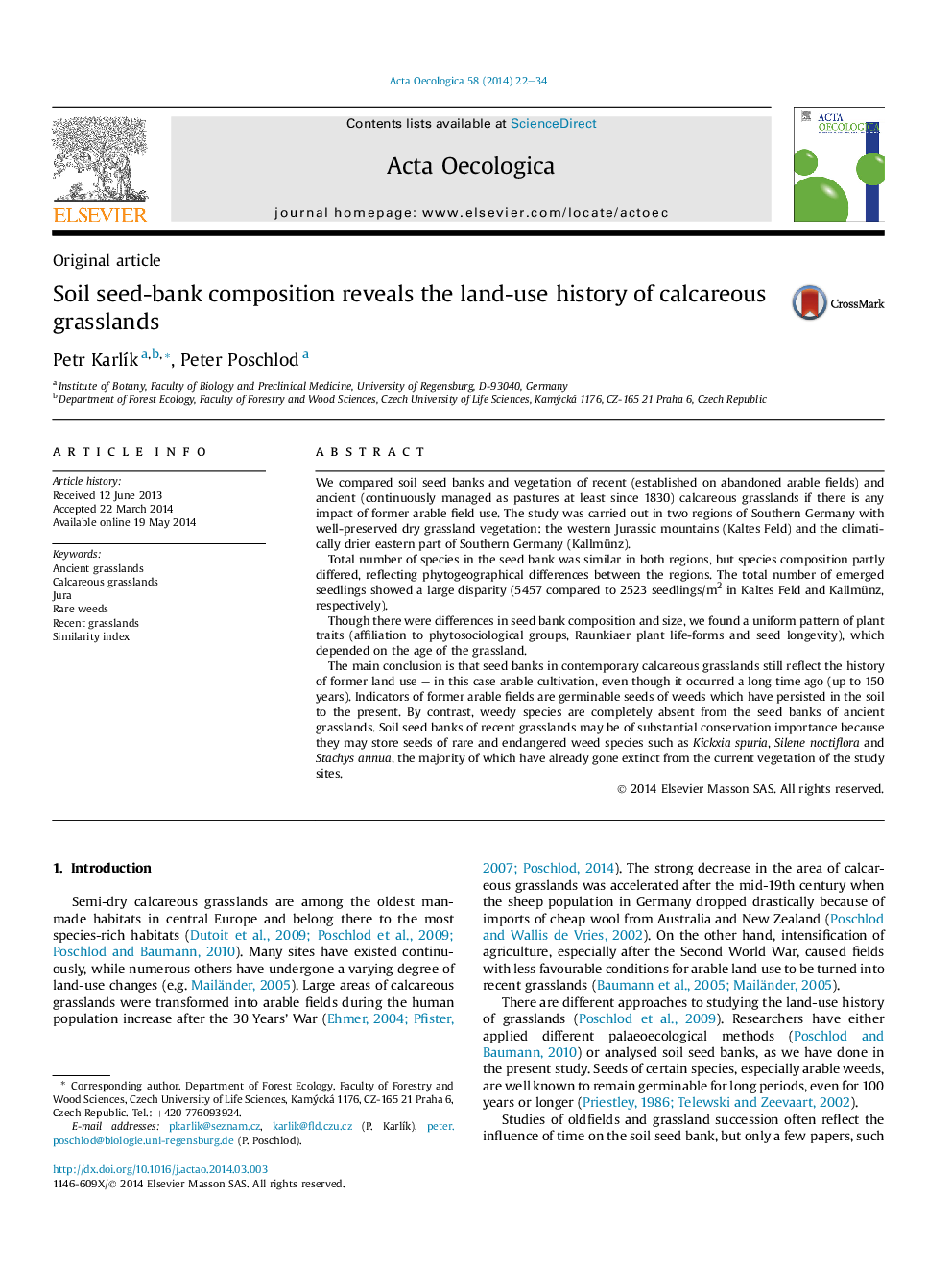| Article ID | Journal | Published Year | Pages | File Type |
|---|---|---|---|---|
| 4380713 | Acta Oecologica | 2014 | 13 Pages |
•Seed banks in contemporary grasslands reflect the history of former land use.•Indicators of former arable fields are germinable seeds of weeds.•Seeds of weeds are still able to germinate after longer than 150 years.•Recent grasslands store seeds of rare and endangered weed species.•Seed banks have a limited significance for the restoration of calcareous grasslands.
We compared soil seed banks and vegetation of recent (established on abandoned arable fields) and ancient (continuously managed as pastures at least since 1830) calcareous grasslands if there is any impact of former arable field use. The study was carried out in two regions of Southern Germany with well-preserved dry grassland vegetation: the western Jurassic mountains (Kaltes Feld) and the climatically drier eastern part of Southern Germany (Kallmünz).Total number of species in the seed bank was similar in both regions, but species composition partly differed, reflecting phytogeographical differences between the regions. The total number of emerged seedlings showed a large disparity (5457 compared to 2523 seedlings/m2 in Kaltes Feld and Kallmünz, respectively).Though there were differences in seed bank composition and size, we found a uniform pattern of plant traits (affiliation to phytosociological groups, Raunkiaer plant life-forms and seed longevity), which depended on the age of the grassland.The main conclusion is that seed banks in contemporary calcareous grasslands still reflect the history of former land use – in this case arable cultivation, even though it occurred a long time ago (up to 150 years). Indicators of former arable fields are germinable seeds of weeds which have persisted in the soil to the present. By contrast, weedy species are completely absent from the seed banks of ancient grasslands. Soil seed banks of recent grasslands may be of substantial conservation importance because they may store seeds of rare and endangered weed species such as Kickxia spuria, Silene noctiflora and Stachys annua, the majority of which have already gone extinct from the current vegetation of the study sites.
